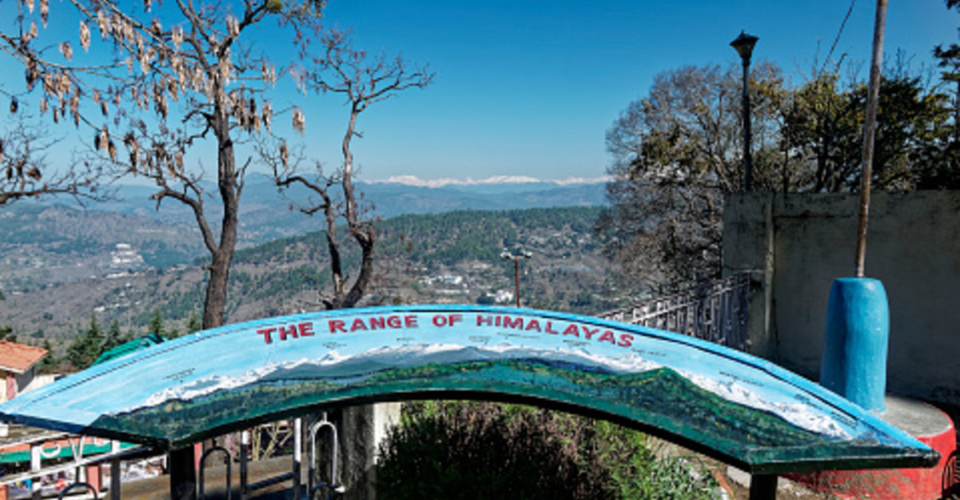

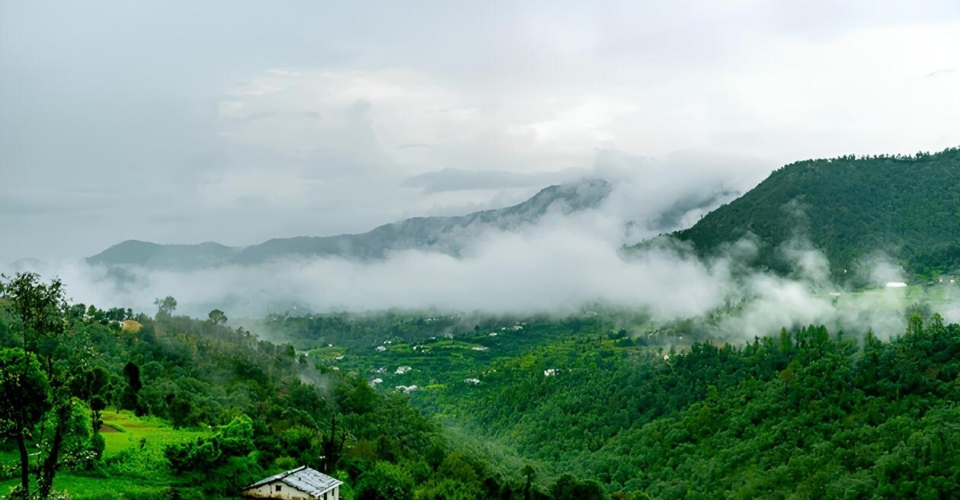
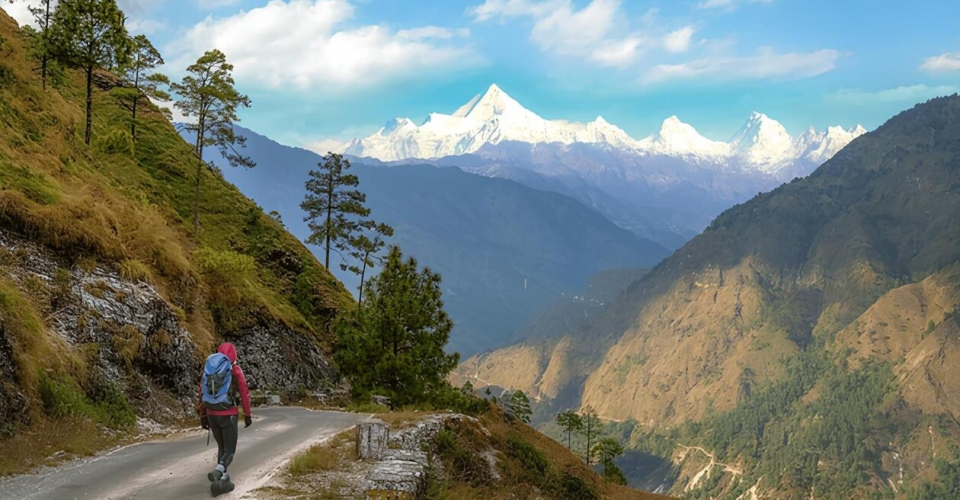
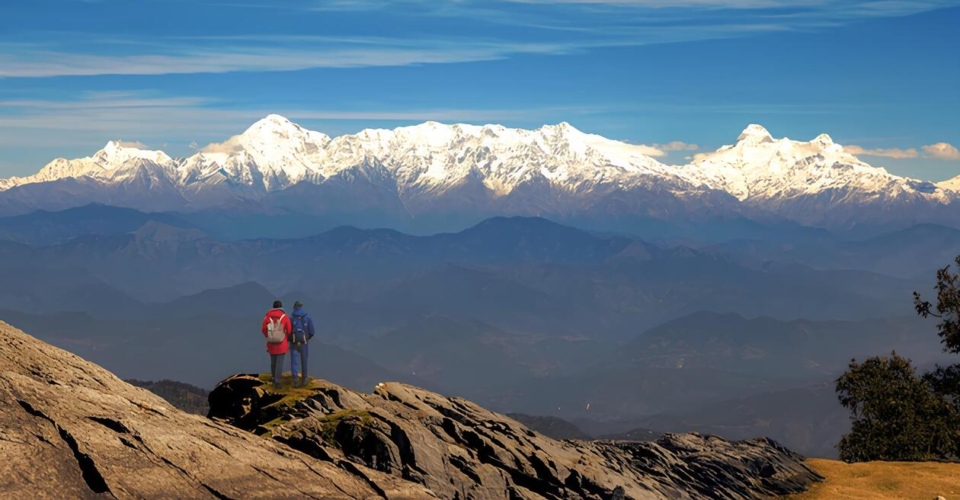
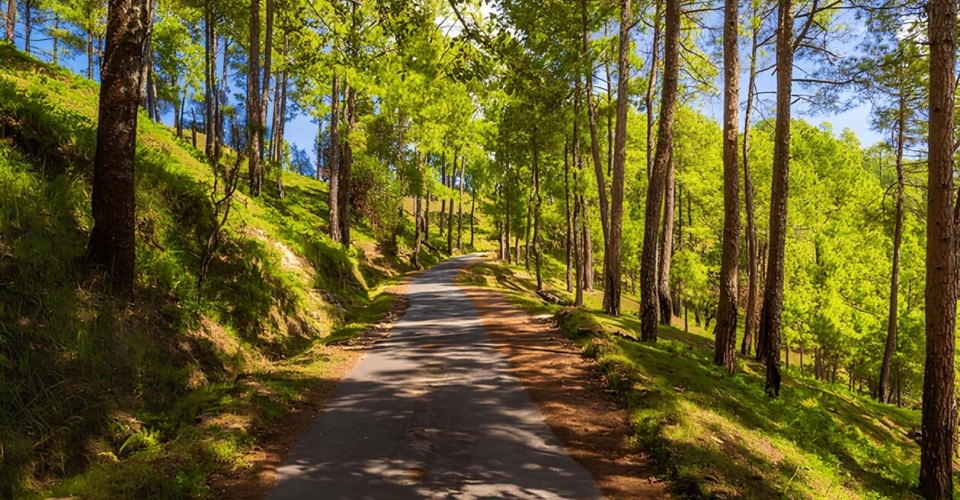
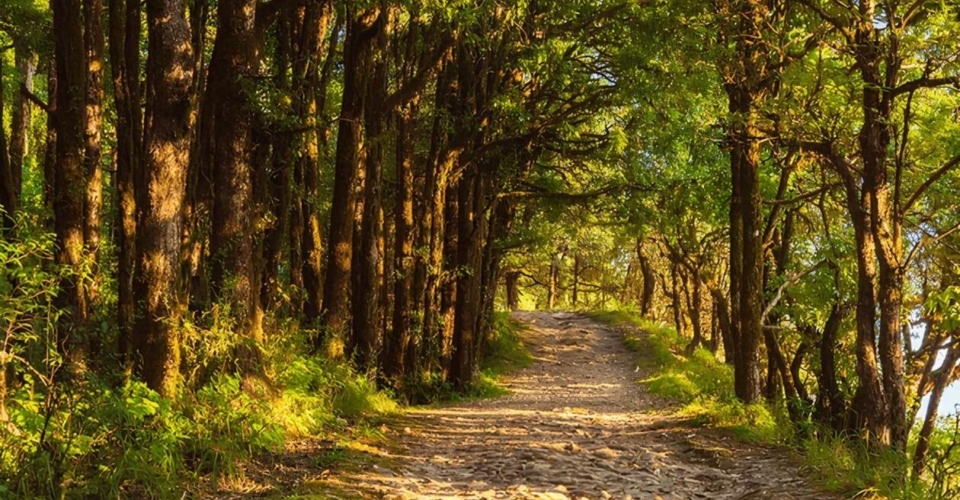
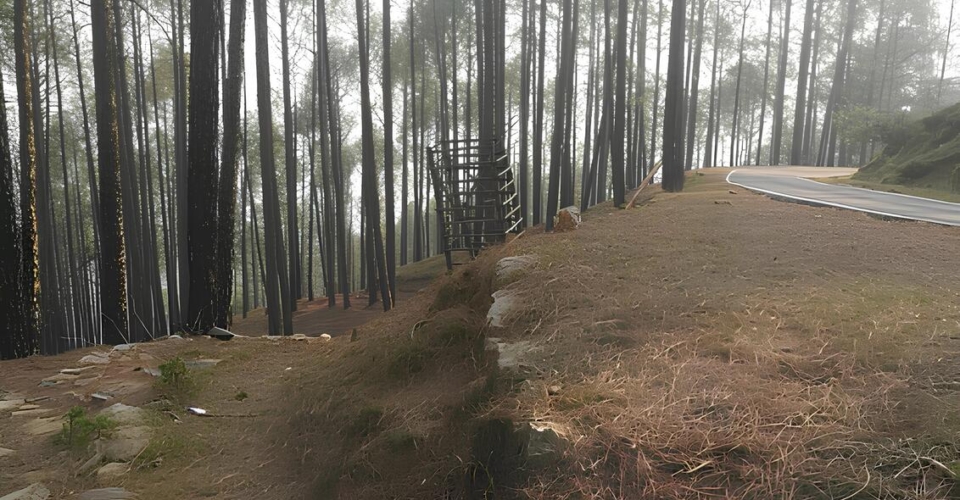
About Binsar
Binsar is a serene hill station nestled in the Almora district of Uttarakhand, India. Situated approximately 33 kilometers north of Almora town, it stands at an elevation of about 2,420 meters above sea level, offering breathtaking panoramic views of the majestic Himalayan peaks, including Nanda Devi, Trishul, Shivling, Chaukhamba, and Panchachuli.
Encompassing the Binsar Wildlife Sanctuary, the area is renowned for its rich biodiversity and lush oak and rhododendron forests. Established in 1988, the sanctuary spans 45.59 square kilometers and serves as a haven for over 200 bird species, such as the Himalayan monal, koklass pheasant, and various species of eagles and woodpeckers . The sanctuary’s highest point, Zero Point (Jhandi Dhar), provides unobstructed views of the surrounding Himalayan ranges.
Beyond its natural beauty, Binsar holds historical significance. It was once the summer capital of the Chand Kings, who ruled the Kumaon region from the 11th to the 18th centuries . The British also utilized Binsar as a summer retreat, constructing several estates within the forest. Notably, the Grand Oak Manor, once home to Sir Henry Ramsay, now serves as a heritage hotel, offering visitors a glimpse into the region’s colonial past.
For travelers seeking a tranquil escape amidst nature, Binsar offers a perfect blend of scenic beauty, wildlife, and historical charm. Its accessibility from Almora and proximity to major cities like Delhi make it an ideal destination for a rejuvenating getaway.
For more information and to plan your visit, explore The Vacation Holiday.
History & Mythology
Binsar, nestled in the serene hills of the Kumaon region in Uttarakhand, India, is a place steeped in both natural beauty and rich mythology. Known for its panoramic views of the Himalayan peaks, this tranquil haven is not just a nature lover’s paradise but also a region brimming with fascinating history and mythology.
Historically, Binsar was once the capital of the Kumaon Kingdom during the reign of King Kesar Singh in the 16th century. The region was strategically important, offering a safe retreat amidst the mountain ranges. The Binsar Fort, now in ruins, serves as a reminder of its once grand past. The fort, built to guard the kingdom from invaders, was a symbol of the region’s importance in the Kumaon dynasty.
The mythology of Binsar is equally captivating. According to local legends, Binsar is believed to be the place where Lord Shiva, in the form of a deer, appeared before the sage Banasura. The sage, in deep penance, was blessed with divine visions, and the sacred region became associated with spirituality and divine power. It is also said that Lord Shiva and Goddess Parvati used to reside in the area, further elevating Binsar’s mysticism and importance in Hindu traditions.
The word “Binsar” itself has a mystical origin, believed to come from the combination of ‘Bin’ and ‘Sar,’ which means “the center of the world” in the local dialect, symbolizing its spiritual and geographical significance. The region’s tranquility, coupled with these ancient stories, attracts not only those seeking natural beauty but also pilgrims and spiritual seekers.
Today, Binsar is an eco-tourism hotspot, preserving both its historical and mythological charm. Visitors come not just for its scenic vistas but to experience the mystical energy that has drawn people to this sacred land for centuries.
Weather/Climate of Binsar:
Binsar, a serene hill station nestled in the Kumaon region of Uttarakhand, is known for its lush forests, panoramic Himalayan views, and the Binsar Wildlife Sanctuary. Located at an altitude of around 2,420 meters (7,999 feet), it offers a tranquil escape for nature lovers and trekkers. Reaching Binsar requires a combination of transport modes depending on your starting point.
Nearest Airport: Pantnagar Airport (PGH)
Distance from Binsar: Approx. 152 km
Travel Time: 4.5–5.5 hours by road
Connectivity: Pantnagar Airport has limited commercial flights, mostly from Delhi.
From the Airport: Taxis are available for hire to Binsar or to Kathgodam railway station for onward travel.
Alternative Airport: Indira Gandhi International Airport (Delhi)
Distance: Approx. 380 km
Ideal for international or out-of-state travelers. From Delhi, one can travel by train or car to Binsar.
Nearest Railway Station: Kathgodam Railway Station (KGM)
Distance from Binsar: Approx. 110 km
Travel Time: 3.5–4.5 hours by road
Major Trains to Kathgodam:
Ranikhet Express (from Delhi)
Shatabdi Express (from Delhi)
Bagh Express (from Howrah/Kolkata)
From Kathgodam:
Taxis and shared cabs are available for hire to Binsar.
Local buses also operate to Almora (33 km from Binsar), from where you can hire a cab.
Binsar is well connected by road to major cities in Uttarakhand and northern India.
From Delhi:
Distance: Approx. 380 km
Route: Delhi – Hapur – Moradabad – Rampur – Rudrapur – Haldwani – Kathgodam – Almora – Binsar
Travel Time: 10–12 hours
Mode: Self-drive, private cab, or government/private buses to Almora (followed by a taxi to Binsar)
From Nainital:
Distance: 90 km
Travel Time: 3–4 hours
From Almora:
Distance: 33 km
Travel Time: 1.5 hours
Binsar is accessed through a forest gate (entry fee applicable), followed by a scenic drive to the forest rest house or other accommodations.
Private Taxis: Most convenient for families and groups, easily available from Kathgodam or Almora.
Shared Cabs/Buses: Budget-friendly option, especially from Almora.
Entry Fee: If entering the Binsar Wildlife Sanctuary area (where most hotels are), an entry fee is charged per person and vehicle.
Best Time to Travel: March to June and September to November (avoid monsoon and heavy snow months unless prepared).
1. Accommodation Facilities
Binsar offers a range of accommodation options suitable for different budgets and preferences:
Eco-Resorts & Luxury Hotels: KMVN Tourist Rest House, Binsar Forest Retreat, and Mary Budden Estate offer comfortable stays with modern amenities and scenic views.
Budget Guesthouses & Homestays: Numerous budget-friendly guesthouses and locally run homestays provide basic amenities and a more authentic experience.
Forest Rest Houses: Managed by the Forest Department, these offer a unique stay inside the Binsar Wildlife Sanctuary for nature lovers.
2. Dining & Food Options
Most resorts and hotels have in-house restaurants serving Indian, Kumaoni, and continental dishes.
Small local eateries and dhabas in nearby villages serve traditional North Indian food.
Limited food options are available inside the wildlife sanctuary, so many accommodations provide meals as part of the package.
3. Transportation & Connectivity
Road Connectivity: Binsar is well-connected by road to Almora (30 km), which links to other major cities in Uttarakhand.
Public Transport: Buses and shared taxis are available from Almora. However, private taxis or self-driving are more convenient.
Nearest Railway Station: Kathgodam (about 120 km away).
Nearest Airport: Pantnagar Airport (approx. 150 km away).
4. Healthcare Facilities
There are no major hospitals in Binsar itself.
The nearest medical facilities are available in Almora, including clinics, pharmacies, and a district hospital.
Basic first aid is available at some resorts and the forest check post.
5. Communication & Internet
Mobile network coverage is limited and patchy, especially within the Binsar Wildlife Sanctuary.
Some hotels and resorts offer Wi-Fi, but connectivity can be slow.
BSNL has the best coverage in this region.
6. Tourist Facilities
Binsar Wildlife Sanctuary Office: Entry permits, forest guide services, and information are available at the sanctuary gate.
Trekking & Nature Walks: Guided treks are organized by resorts or local guides.
Viewpoints: The Zero Point offers panoramic views of Himalayan peaks like Nanda Devi, Kedarnath, and Trishul.
Bird Watching & Photography: Binsar is a paradise for bird watchers with over 200 bird species.
7. Banking & ATM Services
ATMs are not available in Binsar itself.
The nearest ATMs and banking services are located in Almora.
Visitors are advised to carry sufficient cash, especially when staying inside the sanctuary.
8. Shopping & Souvenirs
Limited shopping options in Binsar.
Local handicrafts, woolens, and organic products can be found in Almora or surrounding villages.
Some resorts may sell locally sourced products like herbal teas and jams.
10 attractions/places to visit in Binsar:
Things to Do in Binsar:
